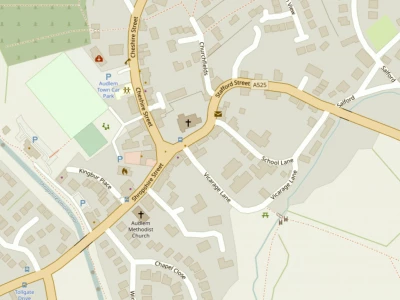







Mad Magazine, an American humour magazine first published on 18th October 1952, satirises all aspects of life and popular culture, politics, entertainment, and public figures. Mad's mascot, Alfred E. Neuman, is typically the focal point of the magazine's cover, with his face often replacing that of a celebrity or character who is lampooned within the issue.
The first issue was written almost entirely by Harvey Kurtzman, and featured illustrations by Kurtzman, along with Wally Wood, Will Elder, Jack Davis, and John Severin. Wood, Elder, and Davis were the three main illustrators throughout the 23-issue run of the comic book.
To retain Kurtzman as its editor, the comic book converted to magazine format as of issue #24 (1955). The switchover only induced Kurtzman to remain for one more year, but crucially, the move had removed Mad from the strictures of the Comics Code Authority. After Kurtzman's departure in 1956, new editor Al Feldstein swiftly brought aboard contributors such as Don Martin, Frank Jacobs, and Mort Drucker, and later Antonio Prohías, Dave Berg, and Sergio Aragonés. The magazine's circulation more than quadrupled during Feldstein's tenure, peaking at 2,132,655 in 1974; it later declined to a third of this figure by the end of his time as editor.
When Feldstein retired in 1984, he was replaced by the team of Nick Meglin and John Ficarra, who co-edited Mad for the next two decades. Following Meglin's retirement in 2004, Ficarra continued as executive editor for 13 years, until the publishing company announced in June 2017 that Mad would relocate to Burbank, California. Bill Morrison succeeded him in January 2018.
Gaines sold his company in the early 1960s to the Kinney Parking Company, which also acquired National Periodicals (a.k.a. DC Comics) and Warner Bros. by the end of that decade. Gaines was named a Kinney board member, and was largely permitted to run Mad as he saw fit without corporate interference.
Following Gaines' death, Mad became more ingrained within the Time Warner (now WarnerMedia) corporate structure. Eventually, the magazine was obliged to abandon its long-time home at 485 Madison Avenue, and in the mid-1990s it moved into DC Comics' offices at the same time that DC relocated to 1700 Broadway. In 2001, the magazine broke its long-standing taboo and began running paid advertising. The outside revenue allowed the introduction of color printing and improved paper stock. Mad ended its 65-year run in Manhattan at the end of 2017, when its offices relocated to DC Entertainment headquarters in Burbank, California.
In its earliest incarnation, new issues of the magazine appeared erratically, between four and seven times a year. By the end of 1958, Mad had settled on an unusual eight-times-a-year schedule, which lasted almost four decades. Issues would go on sale 7 to 9 weeks before the start of the month listed on the cover. Gaines felt the atypical timing was necessary to maintain the magazine's level of quality.
Mad then began producing additional issues, until it reached a traditional monthly schedule with the January 1997 issue. With its 500th issue (June 2009), amid company-wide cutbacks at Time Warner, the magazine temporarily regressed to a quarterly publication before settling to six issues per year in 2010.
This article is from our news archive. As a result pictures or videos originally associated with it may have been removed and some of the content may no longer be accurate or relevant.
Get In Touch
AudlemOnline is powered by our active community.
Please send us your news and views using the button below:
Email: editor@audlem.org


